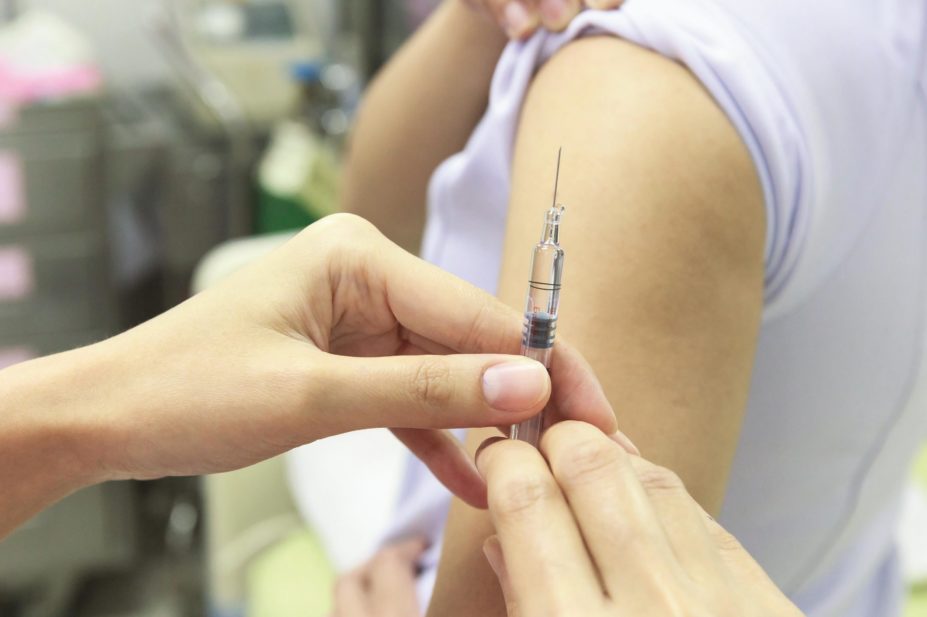
Shutterstock.com
Community pharmacies have the potential to deliver vaccinations to one in eight people globally, according to a report published by the International Pharmaceutical Federation (FIP), which represents 3 million pharmacists and pharmaceutical scientists worldwide.
The report[1]
, published on 27 August 2016, says there is increasing policy provision for pharmacy-based vaccination worldwide. Having surveyed 137 FIP member organisations, receiving responses from 45 countries and territories, the authors found that community pharmacies in 44% of the responding countries have scope to deliver vaccinations.
“The World Health Organization estimates that vaccination saves between 2 and 3 million lives each year,” says co-author Helena Rosado, a researcher at the UCL School of Pharmacy. “It is one of the safest, more efficient and cost-effective measures for preventing, controlling and eradicating life-threatening infectious diseases.
“The accessibility and distribution of community pharmacies make them a first point of contact for patients, providing an excellent opportunity to address low immunisation coverage,” she adds.
Based on their sample, the authors estimate that more than 940 million people could access community-pharmacy based vaccination services in 193,000 community pharmacies if these pharmacies were to provide them. Vaccinations specifically administered by pharmacists could be accessible to 655 million people, the report says.
Many countries have now authorised vaccination in pharmacies and by pharmacists themselves, but vaccination policies vary across the world. To capture the global picture on the role of pharmacists in immunisation, the FIP survey included questions about local policy, practice, training and advocacy activity.
Thirteen respondent countries (29%) allow pharmacists to administer vaccinations, including Argentina, Canada, Costa Rica and the Philippines, while a further seven countries (16%) allow vaccination at pharmacies by other healthcare professionals.
The researchers also found an association between involvement of pharmacies/pharmacists in vaccine delivery and advocacy. For example, in 94% respondent countries or territories where pharmacies/pharmacists can deliver vaccinations, pharmacies were involved in distributing leaflets (compared with 64% in countries where pharmacists cannot deliver vaccinations). In these countries, pharmacists were also more likely to be involved in campaigning, identifying high-risk patients and represented on immunisation committees.
“The indication is that where pharmacists are engaged with actual administration, there is a deeper engagement with a wider scope of activities associated with public health delivery,” the authors say.
“This is not wholly surprising, but does provide some evidence that allowing pharmacists to vaccinate, or using pharmacies as accessible healthcare premises for vaccination, can enhance the public health messaging and provide greater opportunity for public health provision in relation to vaccination.”
Having analysed case studies from 11 countries, the report authors also suggest that resistance to pharmacy-delivered vaccination among other healthcare professionals has declined.
“There is a clear theme of proactivity that runs through those countries that have embraced, legally and professionally, the concept of widening access to vaccines and immunisation services, often working closely with fellow healthcare professionals,” they say.
Claire Anderson, professor of pharmacy at the University of Nottingham, says that the report reflects the growing acceptance of pharmacy-delivered vaccination globally. Training is one of the main obstacles to expansion, she says, adding that vaccine administration should be part of the initial training of all pharmacists.
In the survey, most countries said formal training in vaccine administration is required, but this training was only a preregistration activity in six countries.
Anderson adds that all healthcare professionals have a vital role in working together to increase vaccine coverage, but sometimes this can be misunderstood. “Pharmacist vaccination leads to increased accessibility, increased public vaccination rates and coverage as well as public acceptance, trust and support. Pharmacists reach people that other vaccinators do not always reach,” she says.
References
[1] Rosado H & Bates I. An overview of current pharmacy impact on immunisation: A global report 2016. International Pharmaceutical Federation; 2016.

